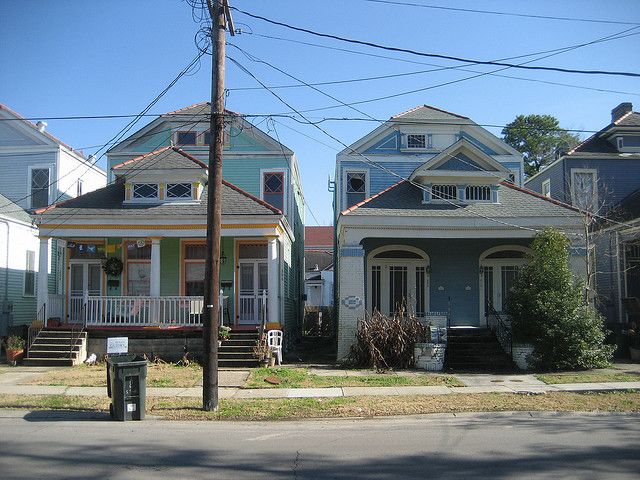As the US department of Veteran Affairs (better known simply as “the VA”) prepares to build a $1.2 billion hospital complex in downtown New Orleans, there’s only one question left to attend to: What will become of the houses currently within the planned footprint? Their answer: Landfill. Buy up the land—using eminent domain if necessary—and simply raze the structures. Perhaps New Orleanians are stubborn, or perhaps the city has lost too many homes over the past decade, but it’s an answer they’re refusing to accept.
New Orleans sorely needs more medical facilities (some areas been without an emergency room since Hurricane Katrina in 2005), and in light of the oil spill, their lagging tourism industry, and the potential closing of one of their major shipping ports, biomedicine seems to offer the economic boon they presently lack.
Even still, the hospital’s construction has drawn many opponents. Many would rather see nearby Charity Hospital, which was closed just after Katrina, reopen before another hospital is built. Others criticize its sprawling, suburban design. But most of all, residents are offended by its disregard for local decisions and autonomy/locals.
New Orleanians recount with exasperation the hours they spent at round tables discussing how to rebuild after the storm. The document that came out of those charrettes, the so-called Unified New Orleans Plan, recommended that the hospital be placed north of Canal Street. But the feds decided to build instead on the southern side of Canal Street, against the wishes of these “citizen planners” and directly on top of people’s homes.
However, if these past few years have New Orleans disillusioned with the federal government, it also has them ready to pick up the feds’ slack. At this point, the project is too far along to keep from dislocating residents. But with literally hundreds of historic houses in the way—including some of the finest examples of New Orleans’ signature, French- and Spanish-influenced architecture—New Orleanians are determined to at least save the structures.
“Realizing it was a contentious issue, City leadership reached out to us as a solution to the proposed teardowns of the historic homes,” says Joyce Kohn, a representative from Builders of Hope, a North Carolina nonprofit that specializes in moving, rehabbing, and selling previously blighted homes. Builders of Hope in turn partnered with several local nonprofits (Providence Community Housing, this author’s employer, among them) and hatched the plan to relocate the homes.
Though conceived at the beginning of summer, the project was held up for months as the newly inaugurated Mayor Landrieu audited and reviewed all the City’s contracts. The first houses began their journey the week of Labor Day; according to Kohn, the last were scheduled to move by Halloween.
Even in a city known for its second lines and jazz funerals, the parade of houses through the streets of downtown is an unusual sight. The houses are lifted off their pilings, loaded onto trucks, and driven to their new locations, vacant lots throughout the city. Meanwhile, a crew travels alongside the houses detaching power lines and clearing low branches, and the Regional Transit Authority has temporarily disabled a streetcar line to allow these titantic floats to cross.
Once in place, the houses will be rehabbed, including an “extreme green” process, which in other similar projects has allowed Builders of Hope to guarantee heating and cooling costs at about $45-55 a month for two years, says Kohn. The first houses will be ready to sell within six months. Local nonprofits are still working to get financing for a soft second-mortgage program, explains Andreanecia Morris of Providence. Regardless, preference will be given low- to moderate-income, first-time homebuyers during the bidding process.
Though New Orleanians can do nothing to prevent the hospital from displacing the people who currently live within its footprint, the locals’ determination—coupled, of course, with proactive political leadership and imported expertise—will save the buildings, their carbon footprint will in fact shrink, and the affordable housing stock will grow. Even in these far-from-ideal circumstances, Morris optimistically calls it a “win-win-win situation.”
Jack Davis of Smart Growth for Louisiana, an urban development and environmental preservation nonprofit, speaks about the project in similarly glowing words, calling the effort “momentous. In a time when we talk about blight and the need to get rid of it, New Orleans has said that these houses are not blight and we need to find them a good home. The Mayor and City Council People who backed it deserve a lot of applause.”
















